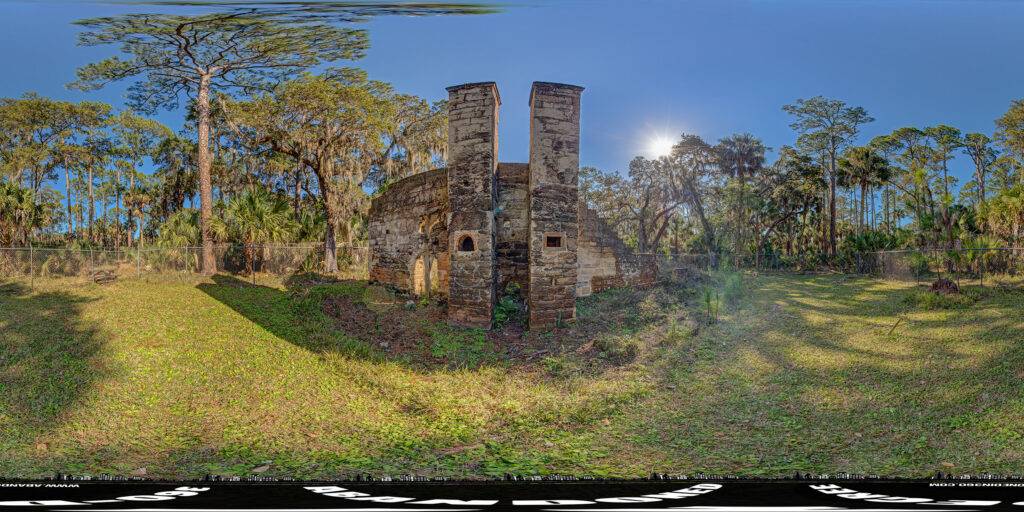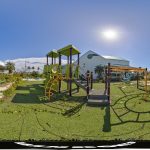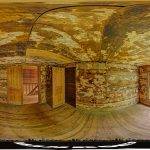Dummitt Plantation Mill Ruins
Take a 360-degree virtual tour around the abandoned Dummitt Plantation Mill Ruins in Ormand Beach, Florida and explore the property at your own pace. There are eight 360-degree panoramic images in the virtual tour below so make sure to take some time and click through them all. Do you like urban exploring? Here is a map with tons of GPS locations for you to get out and explore.
Click here to view it in fullscreen.
About the ruins
This is the site of the rum and sugar processing facility built out of coquina in 1825 by the owner, Thomas H. Dummitt. Coquina is a native limestone rock formed from broken shells and was a typical building material from industrial buildings and forts of the time. Dummitt also installed one of the first steam powered cane crushing mills in Florida and in the United States. During the Second Seminole War, the plantation and mill were burned and destroyed alike other plantations and sugar mill ruins such as the Bulow Plantation which is only 9 miles down the road or the Dunlawton Sugar Mill Ruins in New Smyrna Beach, Florida. You can also check out our top abandoned places in Florida page.
Nowadays, there is not much left of the sugar and rum processing mill, visitors are able to see the ruins from behind a chain link fence. The remains include a few walls, two chimneys, a small well and that is about all. Visitors can enjoy the scenery while sitting at the wooden picnic table that was at the rear of the property and there is also a convenient trash can next to the parking lot.
View more abandoned Sugar Mill Ruins in Florida. Do you have 360-degree panoramic images captured in an abandoned location? Send your images to Abandonedin360@gmail.com. If you choose to go out and do some urban exploring in your town, here are some safety tips before you head out on your Urbex adventure.

An equirectangular panoramic view of the twin chimneys at the Dummitt Plantation Mills historic site in Ormand Beach, Florida.
If you find historic ruins like this interesting, you might like to view the Cruger-dePeyster Plantation Sugar Mill Ruins that are located in New Smyrna Beach, Florida or even the Thomson Tabby House ruins in Jacksonville, Florida.
Do you have 360-degree panoramic images captured in an abandoned location? Send your images to Abandonedin360@gmail.com. If you choose to go out and do some urban exploring in your town, here are some safety tips before you head out on your Urbex adventure.
Equipment used to capture the 360-degree panoramic images:
- Canon DSLR camera
- Canon 8-15mm fisheye
- Manfrotto tripod
- Custom rotating tripod head
If you want to start shooting 360-degree panoramic images, you might want to look onto one-click 360-degree action cameras.
Click on a state below and explore the top abandoned places for urban exploring in that state.







3 Comments
[…] Plantation Sugar Mill Ruins that are located in New Smyrna Beach, Florida or even the Dummitt Plantation Mill Ruins in Ormand Beach, […]
[…] interesting, you might be interested in viewing the virtual tours for the Bulow Plantation Ruins, Dummitt Plantation Ruins, or the Thomson Tabby House […]
[…] might be interested in, the Kingsley Plantation, the Old Fort Park, the Bulow Plantation Ruins, or the Dummitt Plantation Ruins. You can also check out our top abandoned places in Florida […]